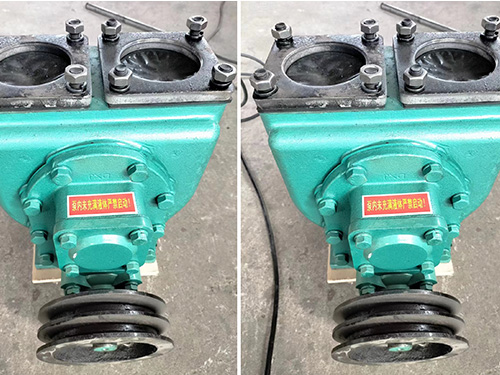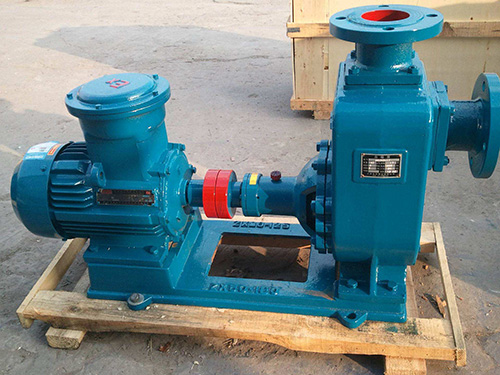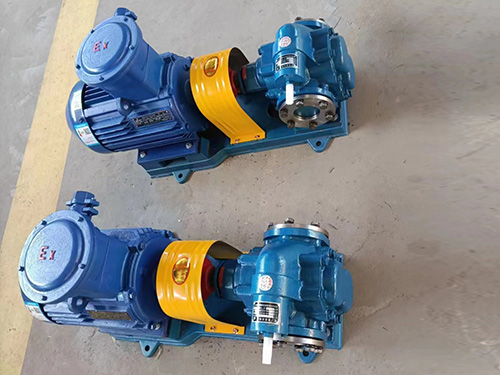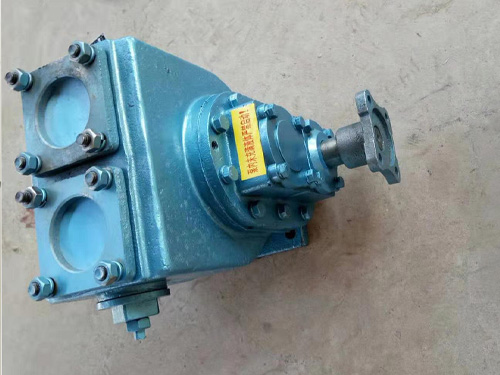Fault analysis and solution of oil arc gear oil pump and outlet pressure problem
2023-03-02 15:01:28
(1) Fault analysis and troubleshooting methods for circular arc gear oil pump: 1. Wear of oil seal and aging of adhesive seal. The rubber oil seal of the unloading plate has aged and deteriorated, losing its elasticity, and losing its sealing and isolation effect on the high-pressure and low-pressure oil chambers. This can cause oil pressure from the high-pressure oil chamber to flow into the low-pressure oil chamber, known as "internal leakage", which reduces the working pressure and flow rate of the oil pump. The normal working pressure of a stainless steel gear pump is 100-110kg/square centimeter, and the normal oil delivery rate is 46L/min. The standard unloading plate rubber oil seal is 57 × 43. The self tightening oil seal is a PG25 × 42 × 10 skeleton oil seal. If it is damaged or fails for a long time, air is sucked into the oil pump through the gap between the oil seal and the main shaft neck or the joint between the oil inlet connecting plate and the oil pump housing, and enters the oil tank through the return oil pipe, generating a large number of bubbles in the oil tank. It will cause a decrease in oil in the tank and an increase in oil in the engine oil pan, resulting in slow or ineffective lifting of agricultural tools. Replacing the oil seal can eliminate this fault
2. Wear of the oil pump housing
The main wear is the wear of the floating shaft sleeve hole (the normal clearance between the gear shaft and the shaft sleeve is 0.09~0.175mm, which should not exceed 0.20mm).
. The gear works under the pressure of oil, and the tip of the gear is close to the oil pump housing, causing wear on the low-pressure chamber of the pump body. Another type of wear is the circumferential wear of the working surface inside the shell, which is mainly caused by impure oil added, so an oil without impurities is added. Dry cleaning shop3. Wear of internal parts of circular arc oil pump
Wear of internal parts of oil pump can cause internal leakage. The large leakage area between the floating shaft sleeve and the gear end face is the main cause of internal leakage. This part of the leakage accounts for about 50% to 70% of the total internal leakage. The volumetric efficiency of gear pumps with wear and internal leakage decreases, and the output power of the oil pump is lower than the input power. All of its losses are converted into thermal energy, which can cause the oil pump to overheat. If the joint plane is pressed tightly, the floating shaft sleeve will have a slight movement during operation, causing wear and tear, resulting in slow or ineffective lifting of agricultural tools. Such floating shaft sleeves can be replaced or repaired
The gear oil pump is an important component that elevates the low-pressure oil in the tank to the high-pressure oil that can perform work through the rolling meshing of a pair of involute gears with the same parameters and structure. It is a power device that converts the mechanical energy of the engine into hydraulic energy(II) Outlet pressure problem of gear pump
Gear pump is a rotary pump that relies on the working volume change and movement formed between the pump cylinder and the meshing gear to transport liquid or increase pressure.
. Two enclosed spaces are formed by two gears, the pump body, and the front and rear covers. When the gears rotate, the volume of the space on the disengaged side of the gears increases from small to large, forming a vacuum that sucks in the liquid. The volume of the space on the meshing side of the gears decreases from large to small, and the liquid is squeezed into the pipeline. The suction and discharge chambers are separated by the meshing lines of two gears. The pressure at the discharge port of a stainless steel oil pump depends on the magnitude of the resistance at the pump outlet When the gear pump is working, the driving wheel rotates together with the electric motor and drives the driven wheel to rotate accordingly. When the meshing teeth on one side of the suction chamber gradually separate, the volume of the suction chamber increases, the pressure decreases, and the liquid in the suction pipe is sucked into the pump; The inhaled liquid is divided into two paths and pushed into the discharge chamber by the gear in the tooth groove. After the liquid enters the discharge chamber, due to the continuous meshing of the teeth of the two gears, the liquid is compressed and enters the discharge pipe from the discharge chamber. The driving gear and driven gear rotate continuously, allowing the pump to continuously suck in and discharge liquid A gear pump is a rotary pump that relies on the variation and movement of the working volume between the pump cylinder and the meshing gear to transport liquid or increase pressure Two enclosed spaces are formed by two gears, the pump body, and the front and rear covers. When the gears rotate, the volume of the space on the disengaged side of the gears increases from small to large, forming a vacuum that sucks in the liquid. The volume of the space on the meshing side of the gears decreases from large to small, and the liquid is squeezed into the pipeline The suction and discharge chambers are separated by the meshing lines of two gears. The pressure at the discharge port of a gear pump depends on the magnitude of the resistance at the pump outlet
The YHCB high flow pump has the characteristics of large flow rate, high head, small settli...

The CYZ centrifugal pump adopts an axial return liquid pump body structure, which is compos...

Copper gear pump (KCB type) is suitable for conveying lubricating oil or other liquids with...

The car mounted circular arc gear pump can be installed on the car and driven by the output...



